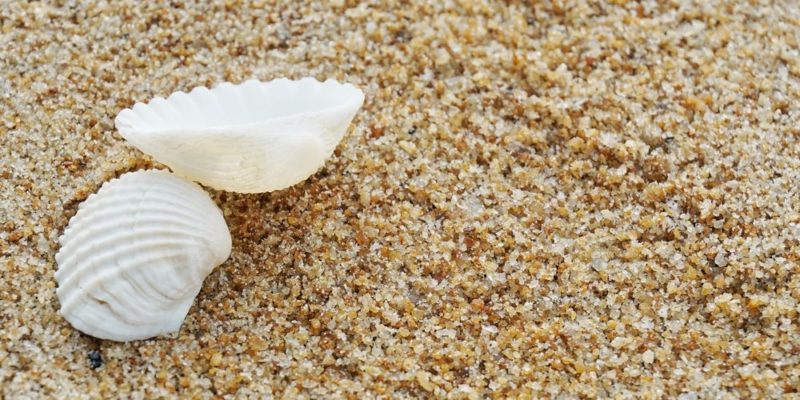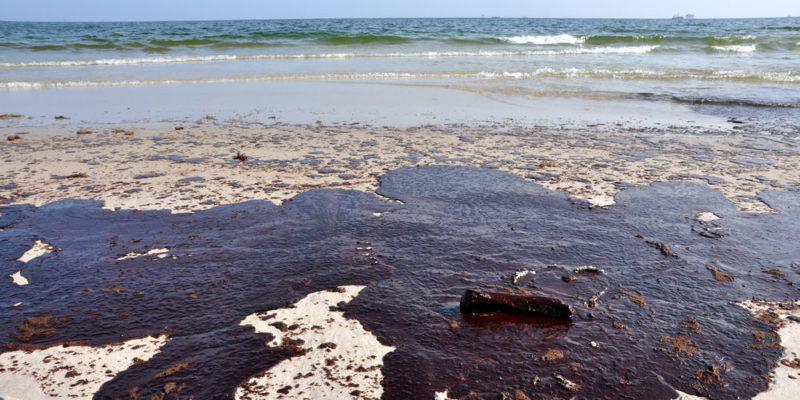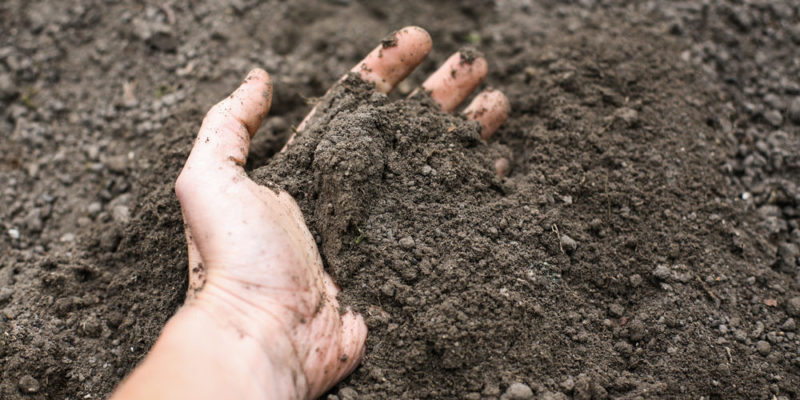We explain what soil is, its properties and its components. Also, why it is important and how to reduce its pollution.
What is soil?
Soil is the layer that covers the earth's surface and supports plant and animal life . It is the great energy engine of nature, since inside it houses nutrients and water that plants and other organisms feed on . It is also a physical support for the establishment of human communities and a source of natural resources that supplies raw materials to many fundamental economic activities.
Soils are made up of different layers that are made up of water, minerals, air , small organisms and organic matter (which is the product of the decomposition of animals and plants that inhabit the soil). Soil is essential for the development of life on planet Earth because it functions as a home for many living organisms.
This structure is formed by the slow disintegration of the rocks , which is produced by a sum of factors, such as the movements of tectonic plates , the alternation of temperatures , runoff due to rains , winds, the activity of the micro and mesofauna, among others.
Soil physical properties
Some of the soil properties are:
- Texture . Soils vary among themselves according to the elements that constitute them and their texture changes according to the quantity and size of the particles that form it. The percentages of sand, clay and silt that a soil has will give it a characteristic texture.
- Fertility . Soils vary among themselves according to their level of fertility, that is, according to their capacity to host plant life. The higher the fertility, the higher the agricultural development of a soil.
- PH . Soils vary among themselves according to their level of acidity (pH). The pH is measured on a scale that goes from 1 to 14, with 7 being a neutral pH, less than 7: acidic and greater than 7: basic.
- Mutation . Soils change over time and due to factors such as the decomposition of organic waste, excessive rains, among others. A soil can become, over time, more fertile or less fertile.
- Permeability . Soils vary among themselves according to their permeability, that is, the ability to filter water and air. This will depend on the structure of the soil and the size and characteristics of the materials that make it up.
- Structure . Soils vary among themselves according to the way in which the elements and materials that constitute them are grouped.
- Salinity . Soils vary among themselves according to the percentage of accumulated soluble salts they have. This process can occur naturally or as a consequence of phenomena carried out by humans .
- Porosity . Soils vary among themselves according to the amount and structure of pores, which are those spaces in the ground that are empty, that is, they are not made up of solid matter, but of water and air.
Soil components
Among the main components of the soil are:
- Water . It is the basic component of the soil that allows to host plant life. The more humid the soils, the greater plant species can develop in them.
- Air . It is the component that allows plant roots and soil-dwelling organisms to breathe.
- Inorganic material . It is made up mainly of minerals, such as silicates, oxides, micas, limestones or salts.
- Organic matter . It is the component that comes from the decomposition of plant and animal remains. These remains, after decomposing, are transformed into nutrients that contribute to the fertility of the soil.
- Small organisms. It is made up of organisms such as bacteria , fungi , worms, insects , viruses , among many others.

Soil functions
Among the main functions of soils are:
- They harbor nutrients . Soils are made up of nutrients, such as nitrogen , phosphorus, sulfur , iron and magnesium , which makes it possible for a great diversity of species to grow in fertile soils.
- They accumulate water . Soils have a heterogeneous character and are porous, which allows them to retain a considerable amount of water as a “natural sponge”.
- They harbor organisms and plants . Soils host many species of macro and microorganisms that feed on the nutrients present in it. They are also home to plants and trees.
- They regulate floods . Soils absorb water which allows them to cope with heavy rains or the overflowing of water courses.
- They decompose organic substances . Soils are made up of organisms that decompose the remains of other animals and plants, this process extracts the nutrients from which plants and other organisms that inhabit the soil feed.
- They supply food . Soils are the base on which vital economic activities, such as agriculture and livestock, are practiced to produce food for animals and humans.
- They supply raw materials . The soils house a great wealth of natural resources from which raw materials are extracted for various industries such as food, pharmaceuticals, textiles, among others.
- They supply materials for construction . Soils house natural resources and materials that are used by humans for the construction of buildings.
- They accumulate carbon . Soils house the carbon that plants capture from the atmosphere . This generates a lower presence of this gas, which contributes to the greenhouse effect in the air.
- They accumulate cultural and historical heritage . The soils conserve within themselves archaeological remains of already extinct cultures and civilizations.

Types of soils
Soils are classified according to various criteria and different countries usually adopt their own classifications.
The most widespread classification worldwide is the Soil Taxonomy of the USDA ( United States Department of Agriculture ), which classifies soils based on the concept of “diagnostic horizon” (horizons are the layers that make up the soils) and recognizes 12 orders, which have lower levels of hierarchy (from suborders to series). These are:
- Alfisol . They are in humid climates and are characterized by their fertility, so they are soils with a great development of agriculture and forestry. They have horizons made of clay.
- Andisol . They were formed after volcanic eruptions and the characteristic that differentiates them from other soils is that they are composed of minerals such as imogolite and ferrihydrite.
- Aridisol . They are in arid or semi- arid climates in ecosystems such as deserts . They are characterized by the low presence of organic matter and vegetation due to the low rainfall they receive.
- Entisol . They are in dry and cold areas and their main characteristic is that they do not have developed horizons.
- Espodosol . They are in areas with a cold and humid climate and are characterized by their low fertility, by having a reddish color and being acidic soils.
- Gelisol . They are in cold climates, so they are frozen soils and they contain permafrost. They are usually found in high mountain areas or in the Arctic.
- Histosol . They are in cold and swampy areas and are made up mainly of organic matter.
- Inceptisol . They are present in many areas of the planet, since they are a very common type of soil. They are characterized by being young soils with little development of horizons.
- Molisol . They are in semi-humid grassland areas and are characterized by their dark color and fertility, which makes them suitable soils for agricultural practices.
- Oxisol . They are in tropical areas and are characterized by their orange or red color and by the presence of oxidized minerals (hence their name).
- Ultisol . They are in humid and warm areas and are characterized by their reddish color, by having clay on their horizons and by a low level of some nutrients.
- Vertisol . They are in tropical or Mediterranean areas and are characterized by a large presence of clay in their composition and by cracks that make agricultural practices difficult.
Importance of soil
Soil is the foundation on which many of the key relationships within ecosystems develop. It is there that plants and animals live and feed.This area is also essential to carry out many economic activities , such as agriculture and livestock, which feed a large part of the world's population . In addition, many other industries such as forestry, mining, oil and pharmaceuticals use the raw materials obtained by exploiting the natural resources of the soil.
Soil is a limited resource , so its care and conservation is essential since it provides the proper habitat for the proper development of life on Earth.
Soil contamination
 Soils become contaminated when waste is dumped on it with toxic substances that alter the properties of the soil in one way or another. This has negative consequences for all living organisms that inhabit or feed on the soil.
Soils become contaminated when waste is dumped on it with toxic substances that alter the properties of the soil in one way or another. This has negative consequences for all living organisms that inhabit or feed on the soil.Since the soil is the layer on which all human life sits, soils can be the final or transitory destination of pollutants from the different activities carried out by human beings, such as industrial activity and mining activity. In addition, soil contamination can lead to contamination of groundwater or waterways close to the contaminated soil.
There are many substances that pollute the soil, which can be organic or inorganic, for example: heavy metals, hydrocarbons , acids and pesticides.
Some of the sources that generate contamination in the soil are:
- Mining waste .
- Industrial waste.
- Urban and domestic waste.
- Radioactive waste.
- The use of pesticides.
- Spills oil .
- Filtering garbage dumps.
Some agronomic practices, such as continuous tillage, excessive fertilization or grazing with a very high animal load, can also affect the quality of the soils by generating erosion or desertification.
Soil conservation and care

The soil is the place where many of the most important natural cycles for the development of living organisms take place. In addition, it is the source from which resources are extracted that enable human life on Earth. For this reason, taking care of the soil is essential to take care of life and it is essential to carry out practices that take care of its properties.
Some are:
- Do not pollute the floors with domestic or industrial waste.
- Do not pour toxic products on the floors.
- Do not pour contaminated water on the floors.
- To develop a conscientious livestock and agriculture that preserves and cares for the soils.
- Recycle materials such as plastic , glass, and paper .
- Do not deforest forest areas .
- Reforest the cleared areas.
Veronica is a culture reporter at Collaborative Research Group, where she writes about food, fitness, weird stuff on the internet, and, well, just about anything else. She has also covered technology news and has a penchant for smartphone stories. .
Leave a reply
Your email address will not be published. Required fields are marked *Recent post

Sport: What Is It, Types, Risks, Features, Characteristics and Examples

Dogs: Emergence, Features, Characteristics, Feeding and Breeds

Story: Definition, Elements, Structure, Features and Characteristics

